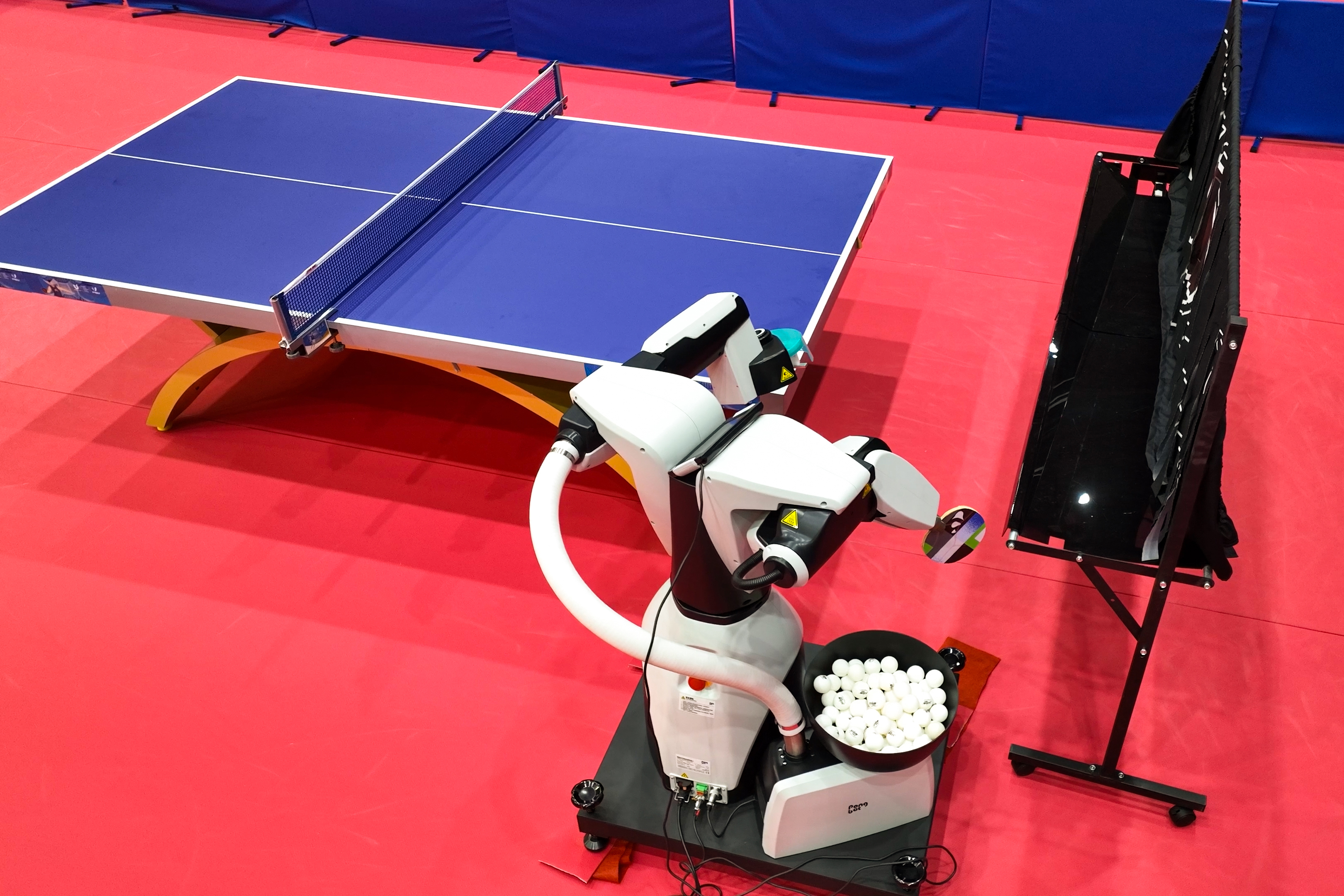Tech Innovations' Role in Building a Leading Sports Nation

By TANG Zhexiao
Off to a golden start at the 2024 Paris Olympic Games, the Chinese delegation bagged the first two gold medals in shooting and diving.
Lauding the success, China's General Administration of Sport, All-China Sports Federation, and Chinese Olympic Committee sent a congratulatory message to the team on July 28, stating, "We hope the Chinese sports delegation promotes the Chinese sports spirit and the Olympic spirit, making further contributions to building China into a leading sports nation."
In recent years, information technologies such as AI, big data and 5G, as well as high-tech devices like sensors are being integrated with the sports industry, and the role of tech innovation in competitive sports has become increasingly prominent.
The Hangzhou Asian Games, the 31st International University Sports Federation Summer World University Games, or the Chengdu Universiade, as well as the Beijing Winter Olympics are prime examples of China building itself into a leading sports nation through tech innovation.
The Hangzhou Asian Games was lauded as a spectacle "like no other" by the media due to its tech innovations. The integration of naked-eye 3D technology, augmented reality (AR), and AI created a fresh and exciting experience for audiences worldwide.
The dazzling e-fireworks which caused no pollution, the digital torchbearer on the opening night, the self-driving shuttle services at the competition venues, and the first-ever use of only clean power at all venues and other innovations at Hangzhou showcased China's achievements in green development and technological progress in international sports.
Cutting-edge technology also prevailed at the Chengdu Universiade last year. According to the Chengdu Municipal Bureau of Science and Technology, more than 170 high-tech products were deployed in over 30 venues. The athletes used high-tech training facilities such as wind tunnel laboratories and six-degree-of-freedom training halls to enhance their performance.
Prior to the Beijing 2022 Winter Olympics, a Winter Olympics laboratory at Northeast Normal University worked on wearable training devices to display athletes' body indicators on the screen in real time. Auxiliary training simulators helped neuromuscular rehabilitation training for athletes taking part in ice and snow events.
Beijing 2022 introduced carbon dioxide refrigerants for ice-making, the least toxic and most eco-friendly natural refrigerants, thereby reducing greenhouse gas emissions. The previous Winter Olympics had used freon refrigerants for ice-making. Compared to that, carbon dioxide refrigerants were estimated to improve refrigeration efficiency by 20 percent and save electricity use by two million kWh a year for the National Speed Skating Oval, the speed skating arena.
Bian Zhiliang, chairman of a Chinese sports industry giant Mount Tai, said the development of sports relies on technology and sci-tech innovation powers the sports industry.
Pushing the development of tech innovation is needed to achieve China's goal of becoming a leading sports nation by 2035, as well as becoming a modernized country.






